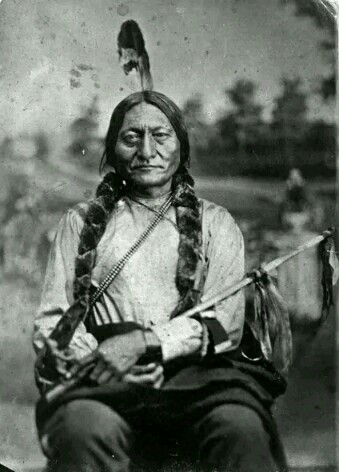Sitting Bull was one of the revered leaders of the Sioux tribe. He was born around 1831 in the area between North Dakota and South Dakota, USA.
Sitting Bull became the chief of the Hunkpapa Sioux tribe in 1868. He participated in many battles to protect his tribe’s land from US government invasion.
In 1876, during the Battle of Little Bighorn, Sitting Bull led the Sioux and Cheyenne tribes to fight against the US army and defeat General Custer in a famous battle. However, after this victory, the US army increased pressure to suppress the Sioux tribe, and he was forced to leave his land.
After the Battle of Little Bighorn, Sitting Bull lived in adventure and evaded government pursuit. However, he returned to public life and became a key figure in the Sioux tribe’s final resistance in the early 20th century.
Sitting Bull was not only famous as a talented and dedicated leader of his tribe, but also as a prophet and religious figure of the tribe. He helped preserve the culture and traditions of the Sioux tribe and always emphasized the connection between humans and nature.
However, in 1890, the US government attacked the Sioux tribe at Pine Ridge Reservation, where Sitting Bull was living. He was killed on December 15, 1890 during this attack. After his death, he became an icon of Native American resistance.
Source: Indigenous Civilization







